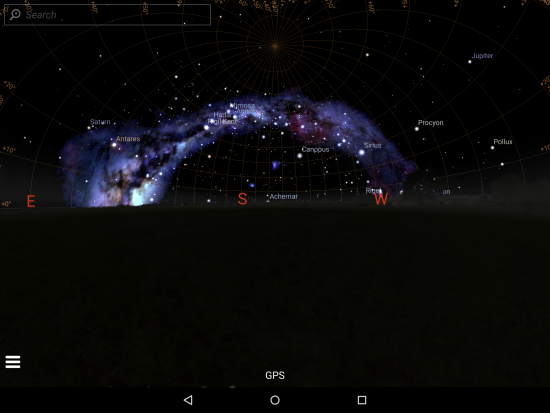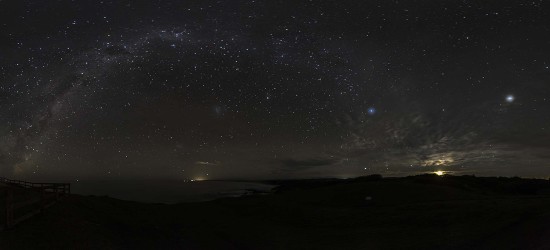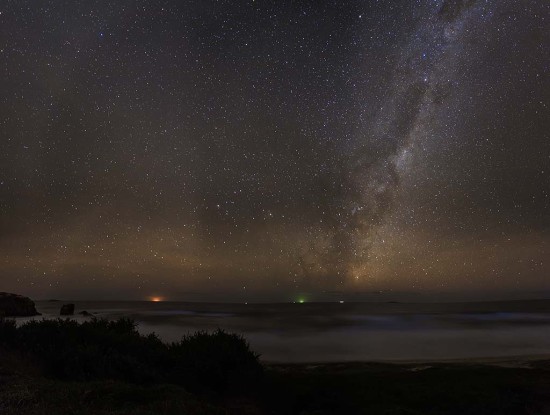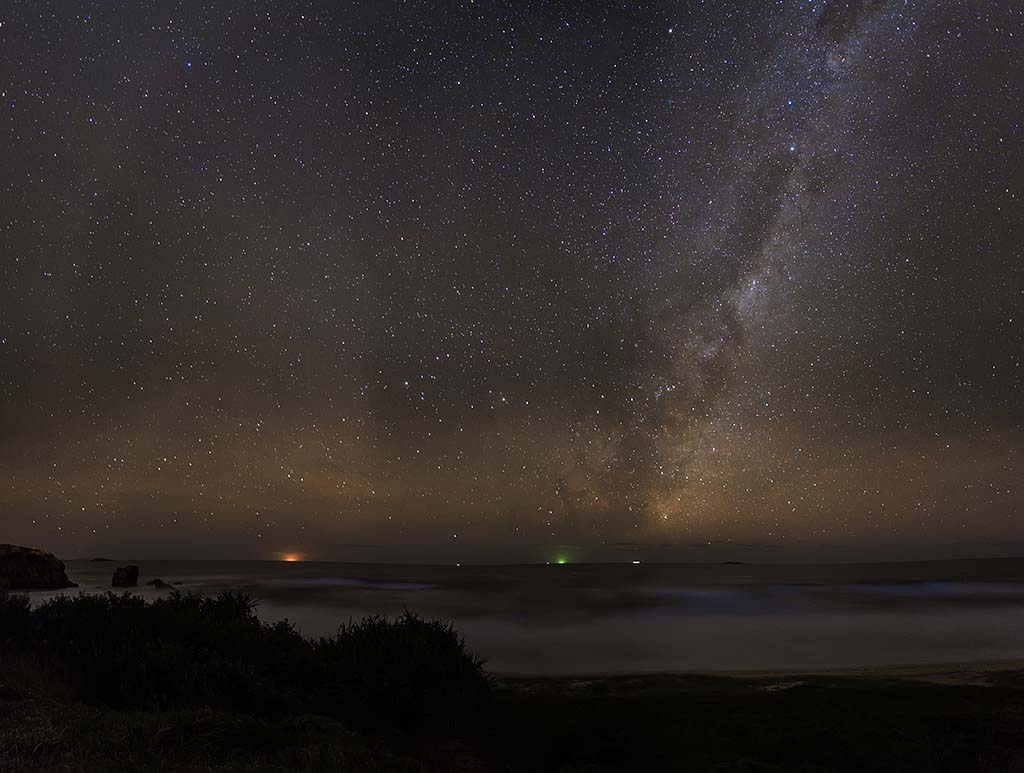Recently I have been trying to master the photography of star scapes or Milky Way shots of the stars. In searching for information on photography of stars I came across the Stellarium App which is available for use on IOS systems or in my case with an Android device. This is an excellent App which can be used to show the night sky as it will look at any time of the night, at any location and in which direction to photograph to get the best view of the Milky Way it will even show you the azimuth angle to enable you to locate the positioning of any star in the sky. I have found this software superb to facilitate this type of photography and to visualise what the night sky will look like at any time in order to plan your night shoot.
The following is a screen shot of the night sky at the time I thought best to capture the Milky Way.

From the above screen shot above I was able to calculate the focal length of lens required to determine the required angle of view and also the compass bearings to shoot to get the whole arc of the Milky Way in the frame. In order to get the correct angle of view I needed to capture an image made of two rows of six images in each row, a total of 12 images with the 28mm f/1.8 lens. This gave an approximately 180 degree view of the Milky Way Galaxy. The image was processed in PTGui Pro and Photoshop. The image captured is as follows.

The bright light on the right side is the Moon setting and the other light in the distance is a distant town.
This image required significant planning, such as the time the moon was setting, the time the Milky Way was low enough in the sky and the positioning of the arc of the Milky Way. I was not going to take the image due to the clouds, but I think the clouds really added to the image around the setting Moon. All the images involved in processing this final image amounted to around 1 GB of data and the files took quite a few hours to process.

The above is also another image of the Milky Way I have captured. This second image is a panorama of four images (two images in each of two rows) captured with a 28mm lens. This time I used Photoshop to to merge the four images into one.
The equipment I use for my photography is mainly as follows, there is a link to the Vanguard case in the B&H link below:


1 comment
Comments are closed.